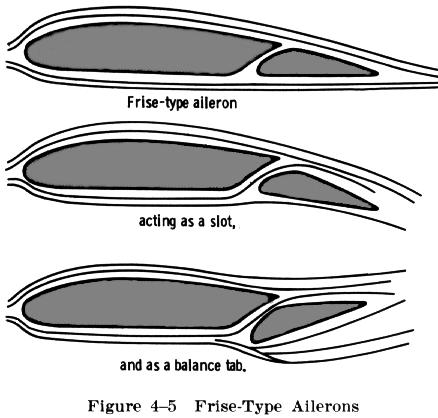The design of the aileron surface itself has also been improved by the "Frise type" aileron. With this type of aileron, when pressure on the control stick or wheel is applied to one side, raising one of the ailerons, the leading edge of that aileron (which has an offset hinge) projects down into the airflow and creates drag. This helps equalize the drag created by the lowered aileron on the opposite wing and thus reduces adverse yaw (Fig. 4-5).
The Frise type aileron also forms a slot so that the air flows smoothly over the lowered aileron. This helps to make the aileron more effective at high angles of attack. However, despite these improvements, some rudder action is still needed whenever ailerons are applied.
